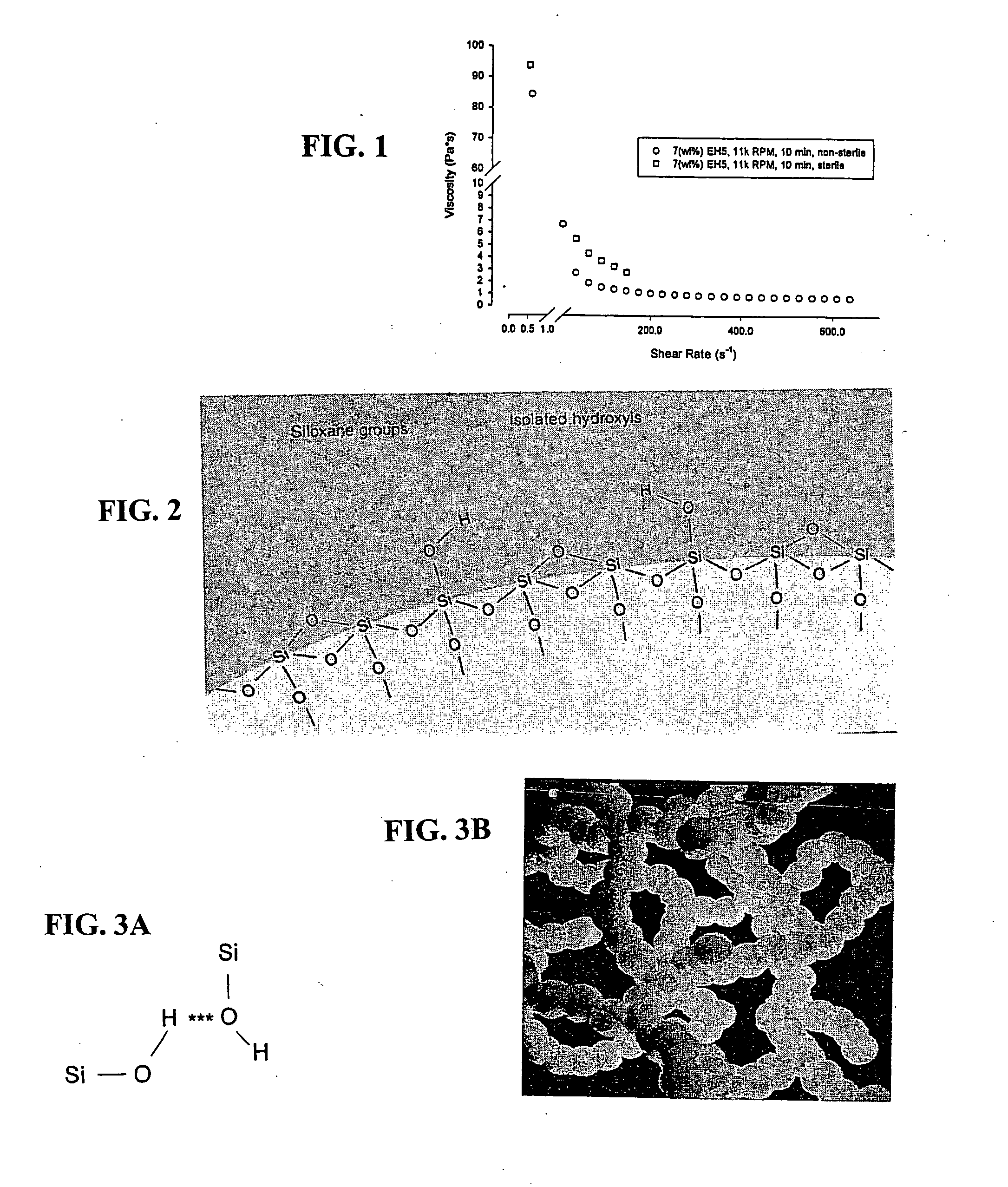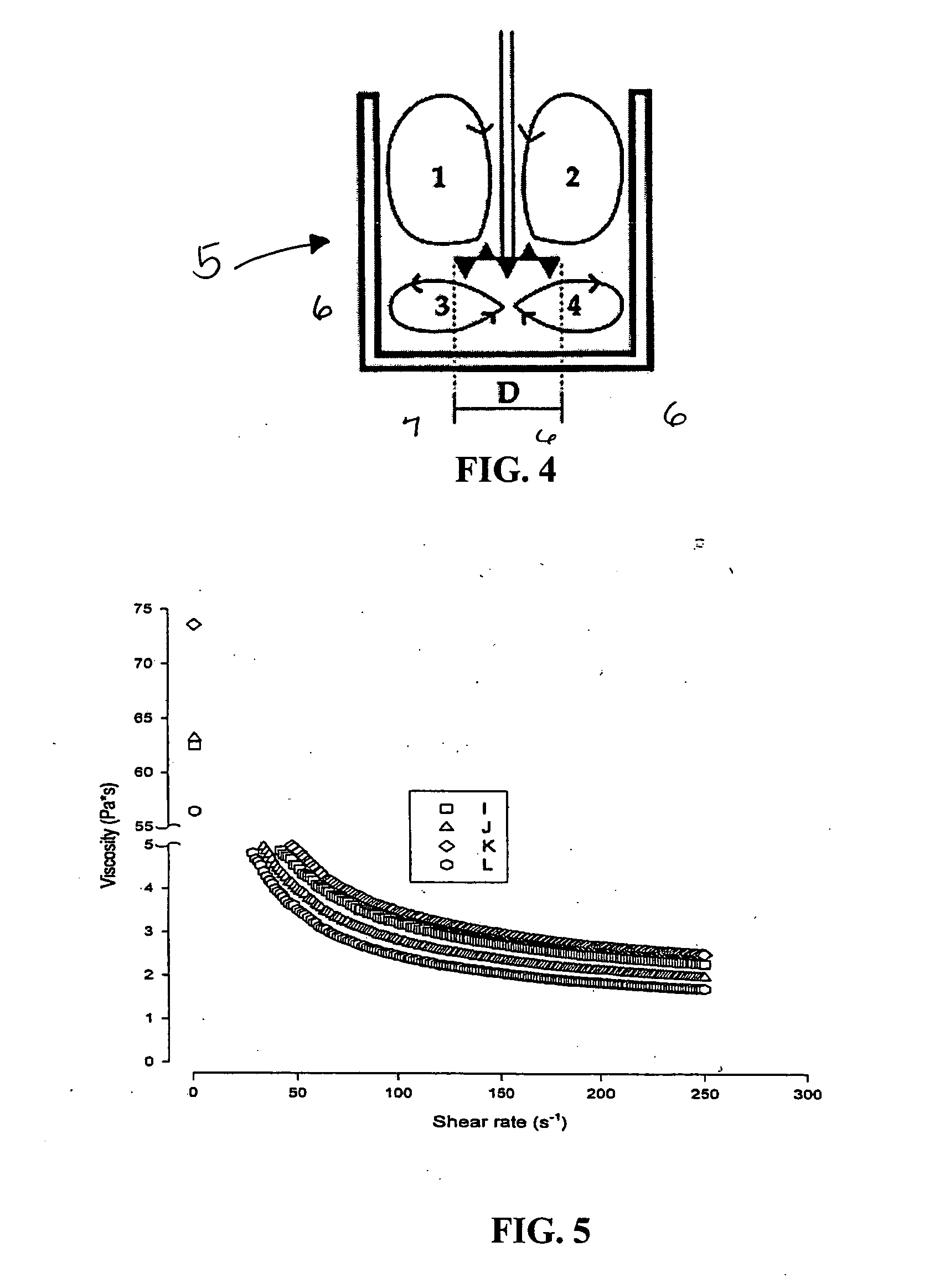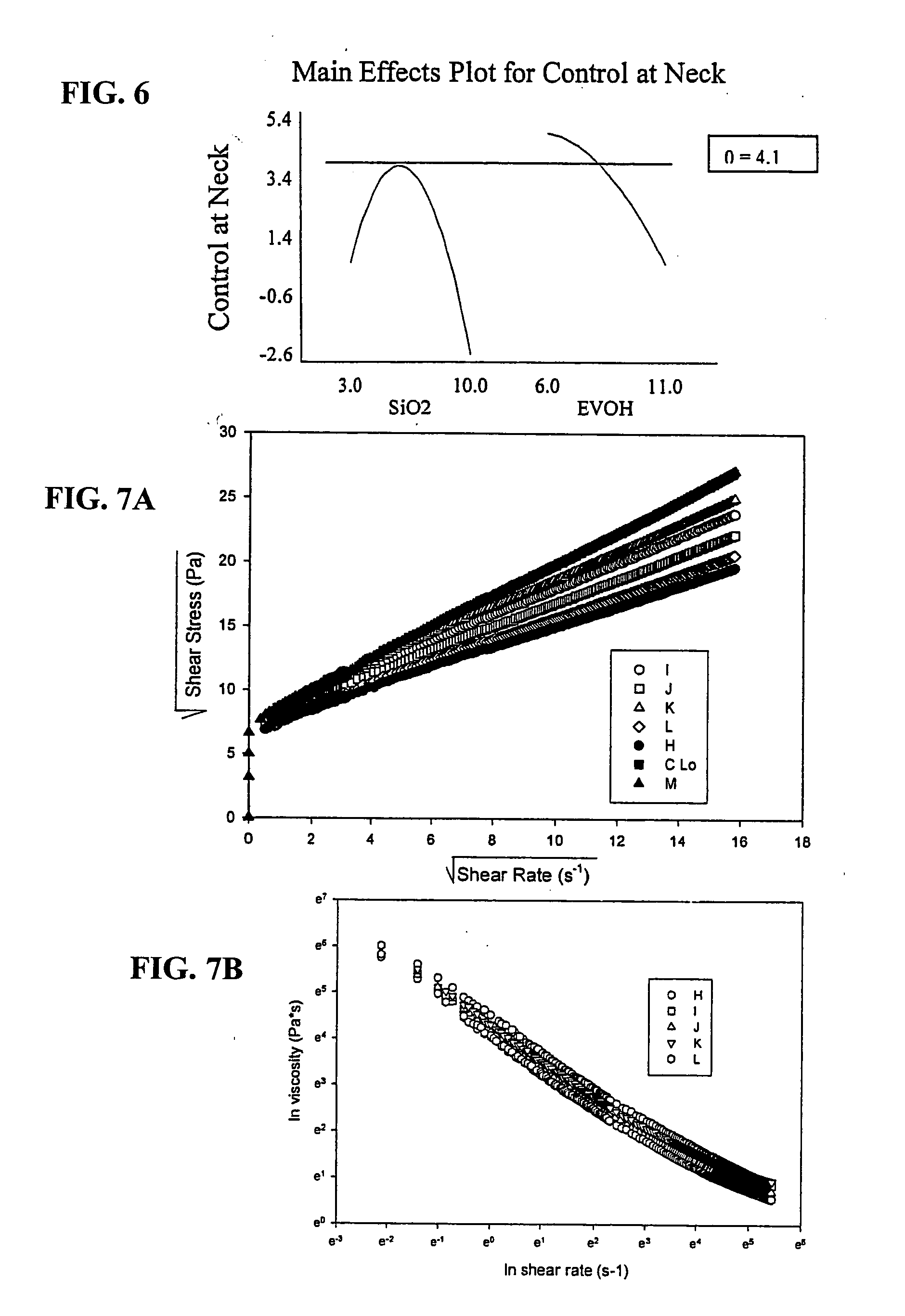Fumed silica embolic compositions
a technology of embolic composition and fumed silica, which is applied in the field of fumed silica embolic composition, can solve the problem of better embolism of vascular sites than a composition of low viscosity
- Summary
- Abstract
- Description
- Claims
- Application Information
AI Technical Summary
Benefits of technology
Problems solved by technology
Method used
Image
Examples
example 1
Preparation of Compositions
This example evaluated the density, precipitation and cytotoxicity of non-sterilized polymeric embolic compositions comprising silica as a rheological modifier as compared to non-sterilized embolic composition not containing fumed silica.
Two different rheologically-modified polymeric embolic compositions were evaluated relative to two conventional polymeric embolic compositions. Specifically, two conventional embolic compositions were prepared (based on 100 ml of DMSO) as follows:
Composition A: 1) 20 g EVOH (48 percent ethylene-average molecular weight of approximately 100,000); 2) 82 g tantalum; and 3) 100 mL DMSO.
Composition B: 1) 30 g EVOH (48 percent ethylene-average molecular weight of approximately 100,000); 2) 123 g tantalum; and 3) 100 mL DMSO.
The DMSO and the EVOH were combined and the resulting composition was covered and heated to about 55±5° C. for 1.0 hours while stirring the composition. The heating was continued at the indicated ...
example 2
Mixing Parameters of Fumed Silica Embolic Compositions
Mixing parameters were studied.
FIG. 1 illustrates non-sterile and sterile viscosities of the composition D of Example 1 versus shear rate. The composition was 10% EVOH (wt / vol DMSO), 38% Ta (wt / final wt), and 7% EH5 silica (wt / final wt) and was mixed with a 1.25″ Cowles Blade in a 500 ml beaker at the indicated RPM. FIG. 1 shows that 11,000 RPMs for 10 min produced a non-sterile fluid that was high viscosity at low shear rate and low viscosity at high shear rate (i.e. shear thinning). Upon sterilization, the material shows an increase in high and low shear viscosity
Quantification of Rheologically-Modified Composition Properties
Using the Brookfield R / S-CPS Rheometer, non-sterile formulations were analyzed as in FIG. 1, measuring viscosity and shear stress against shear rate.
The shear stress data were plotted using the method of Casson (Casson (1959) Rheology of Dispersed Systems. Pergamon, N.Y.). The Casson equation (see ...
example 3
Formulation Optimization
The purpose of this testing was to evaluate and rank the in vitro, aneurysm embolization performance of several prior art formulations and formulations of rheologically-modified composition in order to optimize the formulation. All embolizations were performed in silicone lateral wall aneurysm models. The primary focus was on determining the ability of the formulations to effectively and consistently fill and model the neck of the aneurysms in a controllable fashion.
Multiple formulations were created with variable parameters of their main constituents (e.g., % EVOH (wt / vol DMSO) and % silica (wt / final wt)). These formulations were evaluated numerically on observed effects during embolization.
The numerical results were then compiled and analyzed. The analysis was used to optimize the combination of input variables (% silica / % EVOH) versus “Degree of control at the neck” primarily.
Results and Discussion
FIG. 6 illustrates a main effects plot showing co...
PUM
| Property | Measurement | Unit |
|---|---|---|
| viscosity | aaaaa | aaaaa |
| viscosity | aaaaa | aaaaa |
| viscosity | aaaaa | aaaaa |
Abstract
Description
Claims
Application Information
 Login to View More
Login to View More - R&D
- Intellectual Property
- Life Sciences
- Materials
- Tech Scout
- Unparalleled Data Quality
- Higher Quality Content
- 60% Fewer Hallucinations
Browse by: Latest US Patents, China's latest patents, Technical Efficacy Thesaurus, Application Domain, Technology Topic, Popular Technical Reports.
© 2025 PatSnap. All rights reserved.Legal|Privacy policy|Modern Slavery Act Transparency Statement|Sitemap|About US| Contact US: help@patsnap.com



